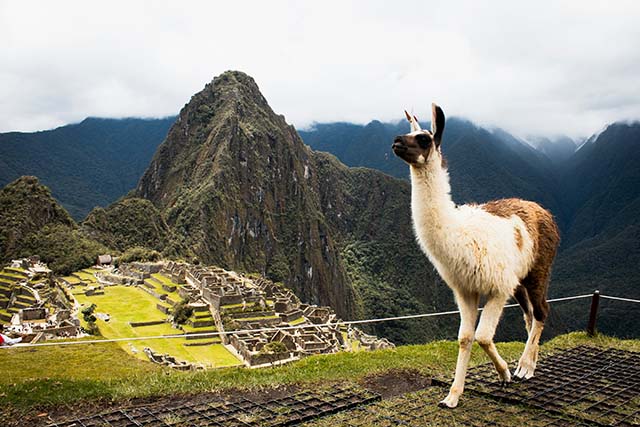Before setting your compass toward ancient ruins and misty mountaintops, explore the thrill of virtual adventure with cricket x game download. This fast-paced game offers a taste of unpredictability and excitement, just like uncovering a forgotten world. While the stakes are different, both experiences challenge your instincts and reward your curiosity.
Overview
High in the cloud forests of the Andes lies a city frozen in time. Machu Picchu is more than just a travel destination—it’s an immersive portal into the mysteries of the Inca civilization. With each moss-covered stone and panoramic vista, visitors step into a forgotten narrative carved into the mountains of Peru. For history enthusiasts and adventurers alike, exploring this UNESCO World Heritage Site is both a physical and cultural pilgrimage.
What makes Machu Picchu remarkable isn’t just its breathtaking location or architectural brilliance—it’s the fact that it was hidden from the world for centuries. Only in the 20th century did this marvel become accessible to outsiders, adding to its allure as a “lost city.” Today, it beckons explorers looking to walk in the footsteps of ancient emperors and stargazers.
Tracing Inca Footprints: A Historical Perspective
Built around 1450, Machu Picchu is believed to have served as a royal estate or ceremonial site for the Inca emperor Pachacuti. It remained unknown to Spanish conquerors, sparing it from destruction during colonization. Its preservation offers rare insight into Inca ingenuity, cosmology, and culture.
Unlike many ancient cities, this site wasn’t discovered due to legends or maps. American explorer Hiram Bingham stumbled upon it in 1911, guided by local farmers. His findings introduced the world to a civilization whose influence stretched from Colombia to Chile.
Inca Engineering Genius
Machu Picchu showcases exceptional design principles. The Incas used ashlar masonry, fitting stones so precisely that mortar wasn’t necessary. This technique helped structures survive earthquakes. Moreover, its terraces managed agriculture on steep slopes, while a sophisticated aqueduct system ensured fresh water flowed throughout the site.
Such planning highlights their deep understanding of both the Earth and the stars. Astronomical alignments appear in sacred locations like the Intihuatana stone, believed to function as a solar calendar.
The Magic of the Sacred Valley
Your journey doesn’t begin at Machu Picchu’s gate. It starts in the Sacred Valley—an area teeming with vibrant culture, living history, and captivating landscapes. Towns like Ollantaytambo and Pisac offer glimpses into traditional Andean life and pre-Columbian architecture.
- Ollantaytambo: A well-preserved Inca town with terraces and a fortress that once defied Spanish invaders.
- Pisac: Known for its colorful artisan market and hillside ruins, it connects spirituality with everyday life.
- Urubamba: A hub of eco-lodges and organic farms, offering a comfortable retreat amidst nature.
These locations serve as stepping stones into Machu Picchu, each narrating a chapter of Inca legacy.
Traveling the Inca Trail: A Walk Through Time
For those willing to trade modern comfort for authenticity, the Inca Trail delivers a once-in-a-lifetime experience. The multi-day trek winds through lush forests, high-altitude passes, and hidden ruins, culminating at the Sun Gate with a first glimpse of Machu Picchu.
Key Highlights of the Trail
- Dead Woman’s Pass: The highest point of the trek, offering stunning panoramic views.
- Runkurakay Ruins: A mysterious oval structure likely used by messengers or priests.
- Wiñay Wayna: A beautiful terrace site near the end of the trail, often overlooked by those who rush the journey.
This trek is not just a hike; it’s a time machine with stone steps.
Cultural Connections: More Than a Tourist Site
Visiting Machu Picchu isn’t only about admiring ruins. It’s about engaging with local culture, traditions, and stories passed down through generations. Travelers who take time to interact with Quechua communities gain a deeper appreciation for the land’s sacred significance.
From sipping chicha (fermented corn drink) with a host family to witnessing traditional weaving techniques, these experiences bridge past and present. Supporting local artisans and guides ensures that the cultural legacy continues to thrive beyond the ruins.
Travel Tips for a Timeless Experience
Planning your visit to Machu Picchu requires foresight and respect for the site’s ecological and spiritual importance. Consider these tips:
- Book in advance: Tickets for both the site and Inca Trail sell out months ahead.
- Acclimate gradually: Spend time in Cusco or the Sacred Valley before ascending to reduce altitude sickness.
- Pack smart: Layered clothing, reusable water bottles, and biodegradable toiletries are essential.
- Respect the site: Follow designated paths, avoid littering, and don’t touch delicate structures.
By traveling responsibly, you help preserve this wonder for future generations.
A Legacy That Echoes Across Centuries
Machu Picchu isn’t just a relic of the past—it’s a reminder of human resilience, creativity, and harmony with nature. Every carved stairway, granite temple, and sweeping terrace tells a story not just of the Incas, but of humanity’s endless quest to understand its place in the cosmos.
Stepping into this ancient sanctuary invites a reflection on our own histories. And whether you come seeking adventure, insight, or inspiration, the journey through Machu Picchu offers more than you imagined—and stays with you long after the last mountain fades from view.



Leave a Reply
You must be logged in to post a comment.